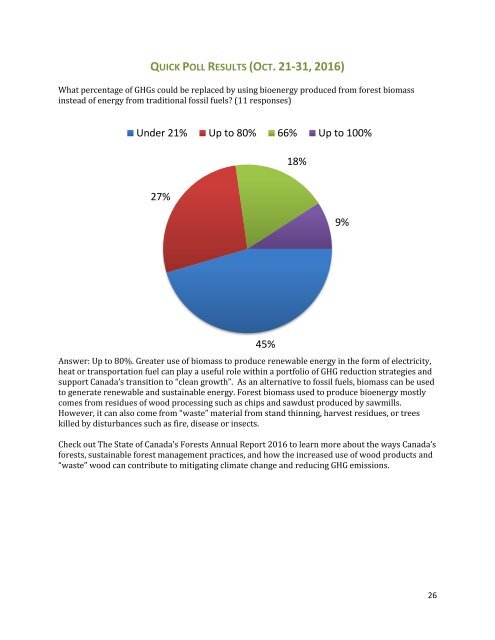LetsTalkCleanResources.ca
NGOQ307nOGf
NGOQ307nOGf
Create successful ePaper yourself
Turn your PDF publications into a flip-book with our unique Google optimized e-Paper software.
QUICK POLL RESULTS (OCT. 21-31, 2016)<br />
What percentage of GHGs could be replaced by using bioenergy produced from forest biomass<br />
instead of energy from traditional fossil fuels? (11 responses)<br />
Under 21% Up to 80% 66% Up to 100%<br />
18%<br />
27%<br />
9%<br />
45%<br />
Answer: Up to 80%. Greater use of biomass to produce renewable energy in the form of electricity,<br />
heat or transportation fuel <strong>ca</strong>n play a useful role within a portfolio of GHG reduction strategies and<br />
support Canada’s transition to “clean growth”. As an alternative to fossil fuels, biomass <strong>ca</strong>n be used<br />
to generate renewable and sustainable energy. Forest biomass used to produce bioenergy mostly<br />
comes from residues of wood processing such as chips and sawdust produced by sawmills.<br />
However, it <strong>ca</strong>n also come from “waste” material from stand thinning, harvest residues, or trees<br />
killed by disturbances such as fire, disease or insects.<br />
Check out The State of Canada’s Forests Annual Report 2016 to learn more about the ways Canada’s<br />
forests, sustainable forest management practices, and how the increased use of wood products and<br />
“waste” wood <strong>ca</strong>n contribute to mitigating climate change and reducing GHG emissions.<br />
26


